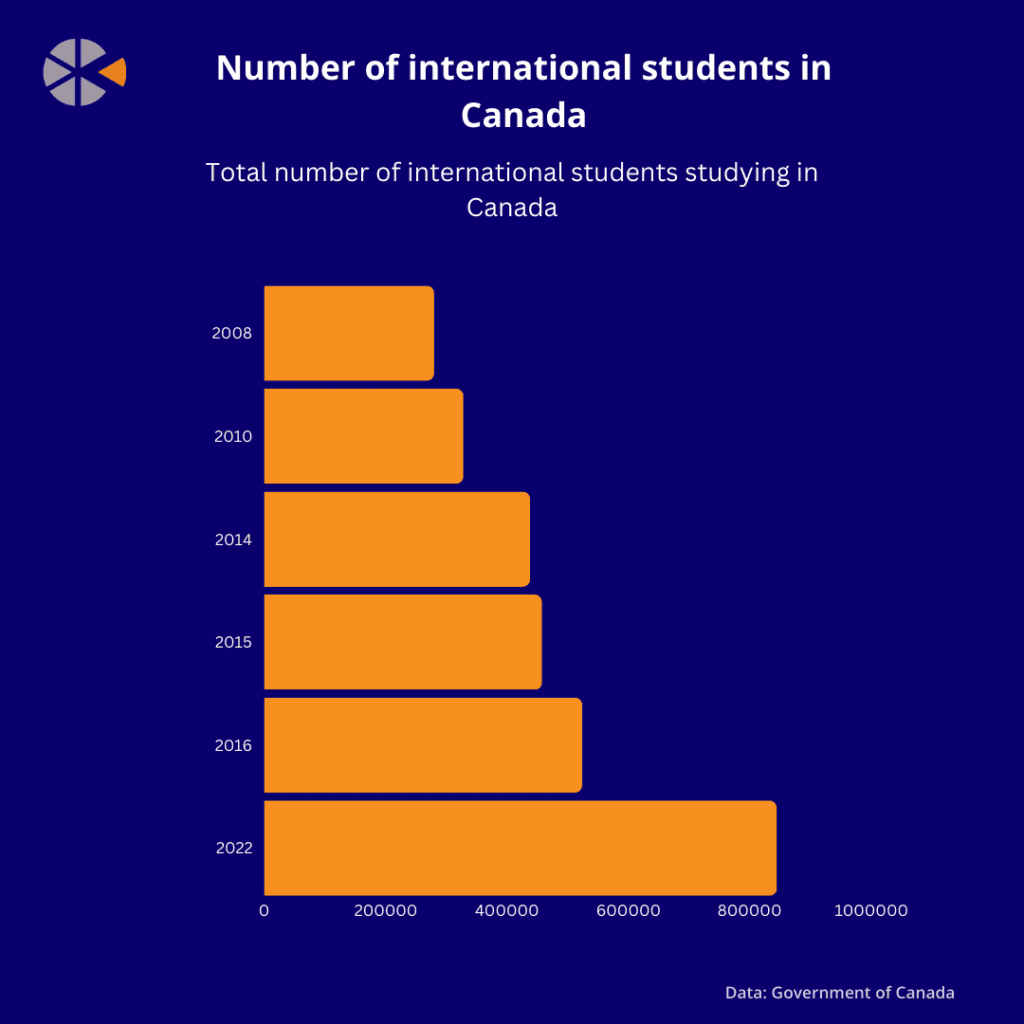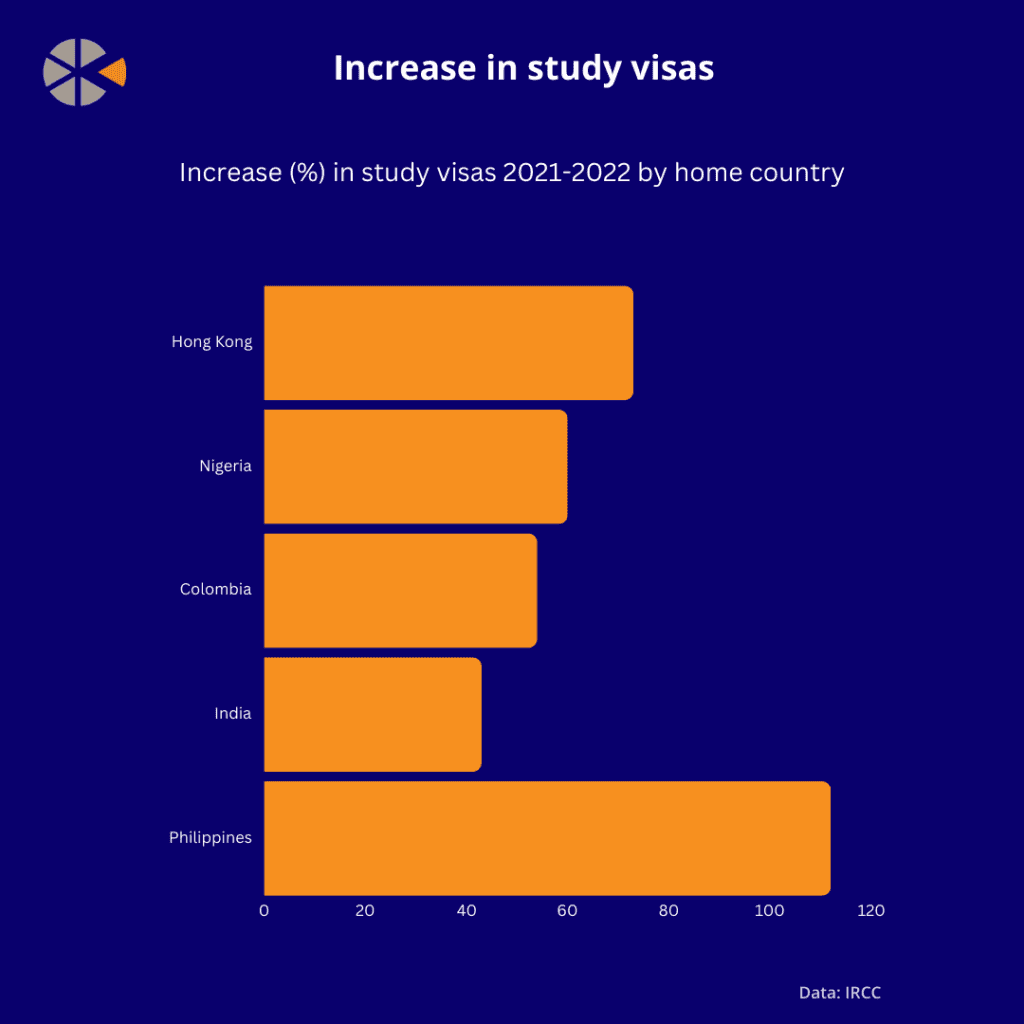This equated to 1.2% of the country’s GDP for the year, according to an update on the economic impact of international education in Canada over 2022 – released by the Canadian government last week.
It is estimated that international students spent roughly $37.3bn on “tuition, accommodation, and discretionary items”, the update said – even when accounting for Canadian scholarships and bursaries.
This spending supported the equivalent of 246,310 jobs in Canada, and also contributed a whopping $7.4bn worth of tax revenue in 2022, the report by Roslyn Kunin and Associates showed.
The report, which covers long-term students at schools, colleges and universities and also short-term students, notes that international education “plays an important role in the globalisation of [the Canadian] economy allowing it to thrive in a fast-changing and competitive environment”.
It shows the number of international students in Canada surged by a massive 61% between 2016 – when there were 523,971 international students – and 2022, when there were 844,444.
Our analysis clearly indicates that the contributions that international students make to Canada’s economy are continuing to grow
Roslyn Kunin and Associates
“The year 2022 saw the highest ever number of long-term students in Canada, after a dip in 2020 and 2021 due to travel restrictions brought on by the Covid-19 pandemic,” the report said.
It continued: “Our analysis clearly indicates that the contributions that international students make to Canada’s economy are continuing to grow. In line with an increasing number of international students, overall spending more than doubled between 2016 and 2022, from $15.5 billion to $37.3 billion, representing an increase of 15.7% per year.”
Most popular study destinations
Canada was home to a total of 844,444 international students in 2022, with the vast majority of those (769,515) classed as long-term students.
The number of overseas students in the country has grown steadily, the report noted, with previous iterations published in 2008, 2010, 2014, 2015 and 2016 all tracking consistent increases.

Ontario housed by far the highest number of international students – 432,272, equating to over half (51%) of the total number of international students in Canada at the time.
This area of Canada was followed by British Colombia, with a total of 186,886 students – making up 22% of the international student population in 2022.

But while Prince Edward Island only had 4,491 international students in 2022, the report noted that the area “recorded the highest percentage increase in the number of study permit holders – from 2000 to 2022, the percentage increase has been over 1,800%”.
Meanwhile, Nunavut and the Northwestern Territories were the least popular destinations for international students in 2022, counting five and 35 students respectively.
What’s driving this?
According to the report, India is Canada’s top sending country, with 319,130 study permit holders in 2022 – up an impressive 47% year on year.
India was followed by the Philippines, with 32,455 study permit holders, marking a huge 112% increase between 2021 and 2022.

Next came Hong Kong, Nigeria and Colombia, up 73%, 60% and 54% on study permit holders year on year respectively.
However, these figures could be set to change, with a sharp drop in study permits noted in March 2024 just months after Canada imposed a study permit cap on international students.
Meanwhile, new data showed that African students are “consistently” showing as less likely to have their visas approved than their global peers.




